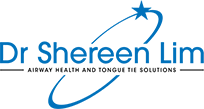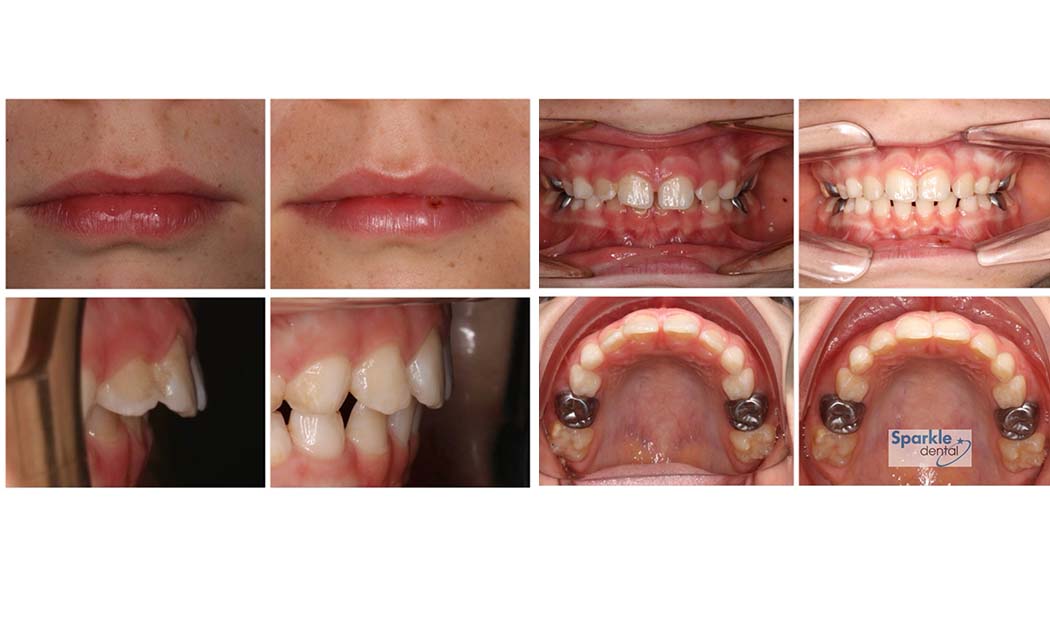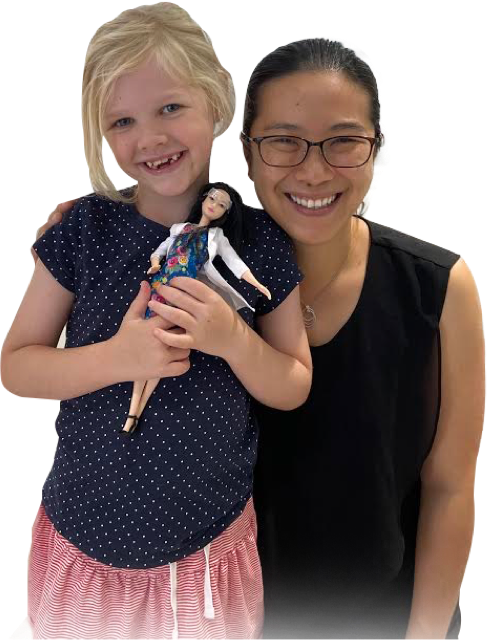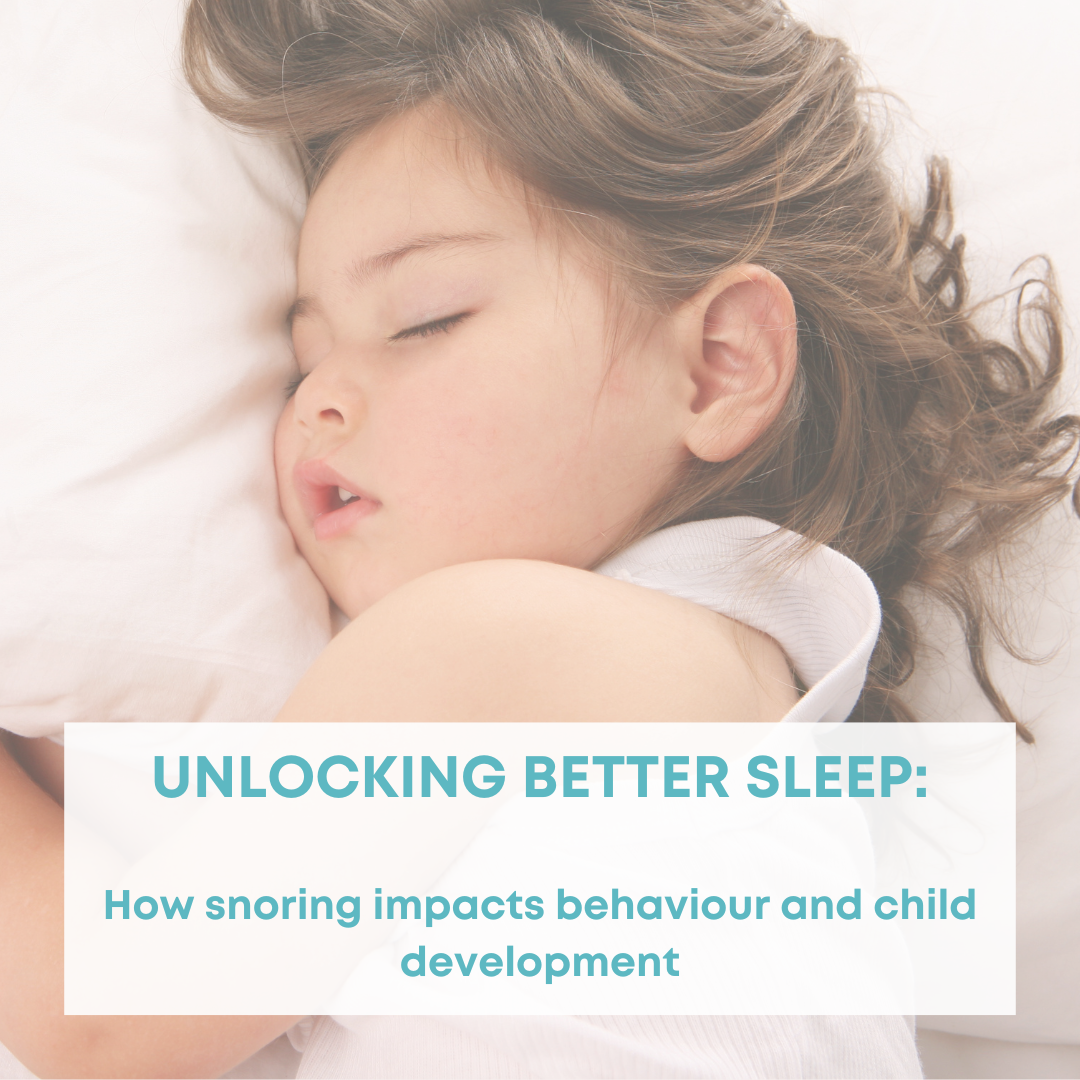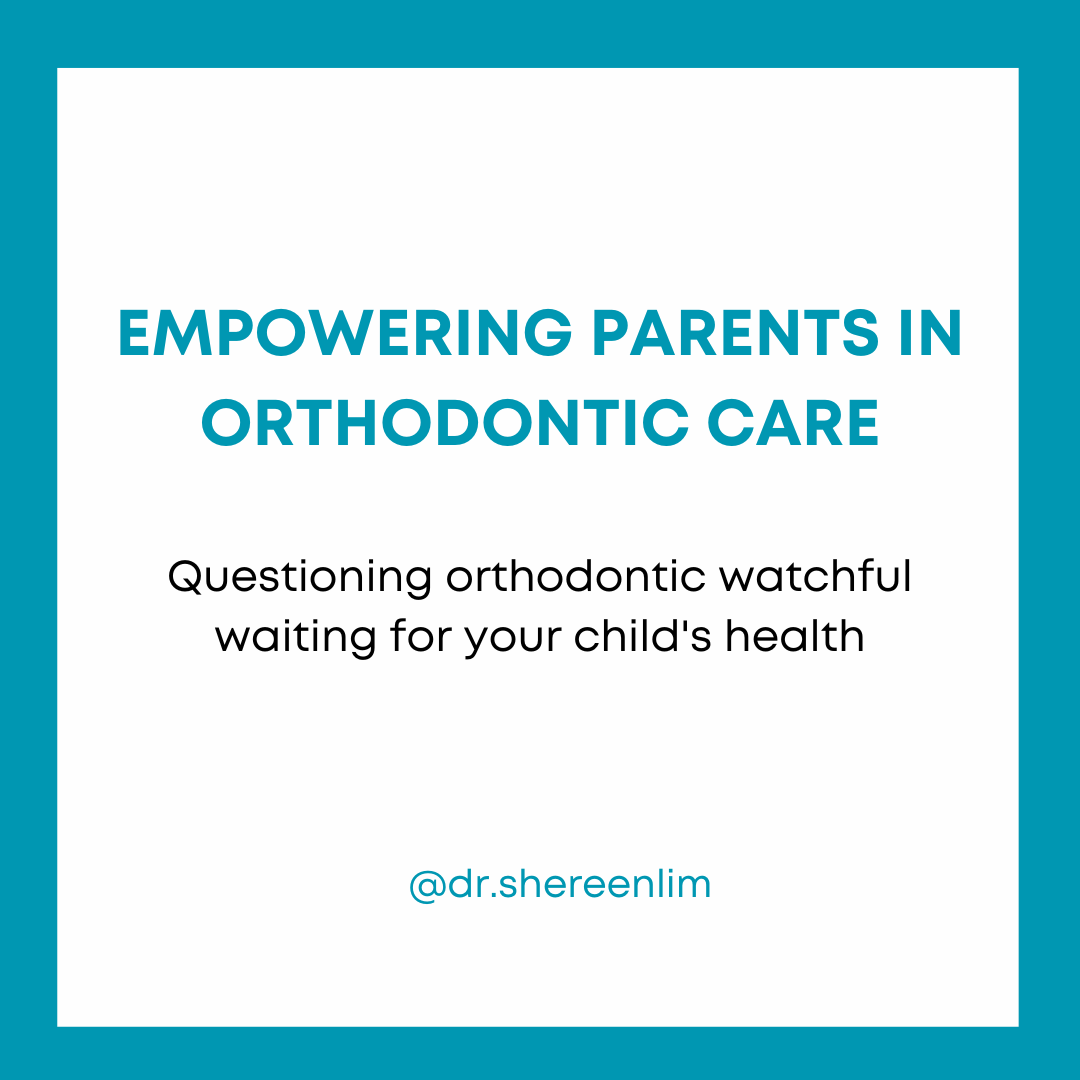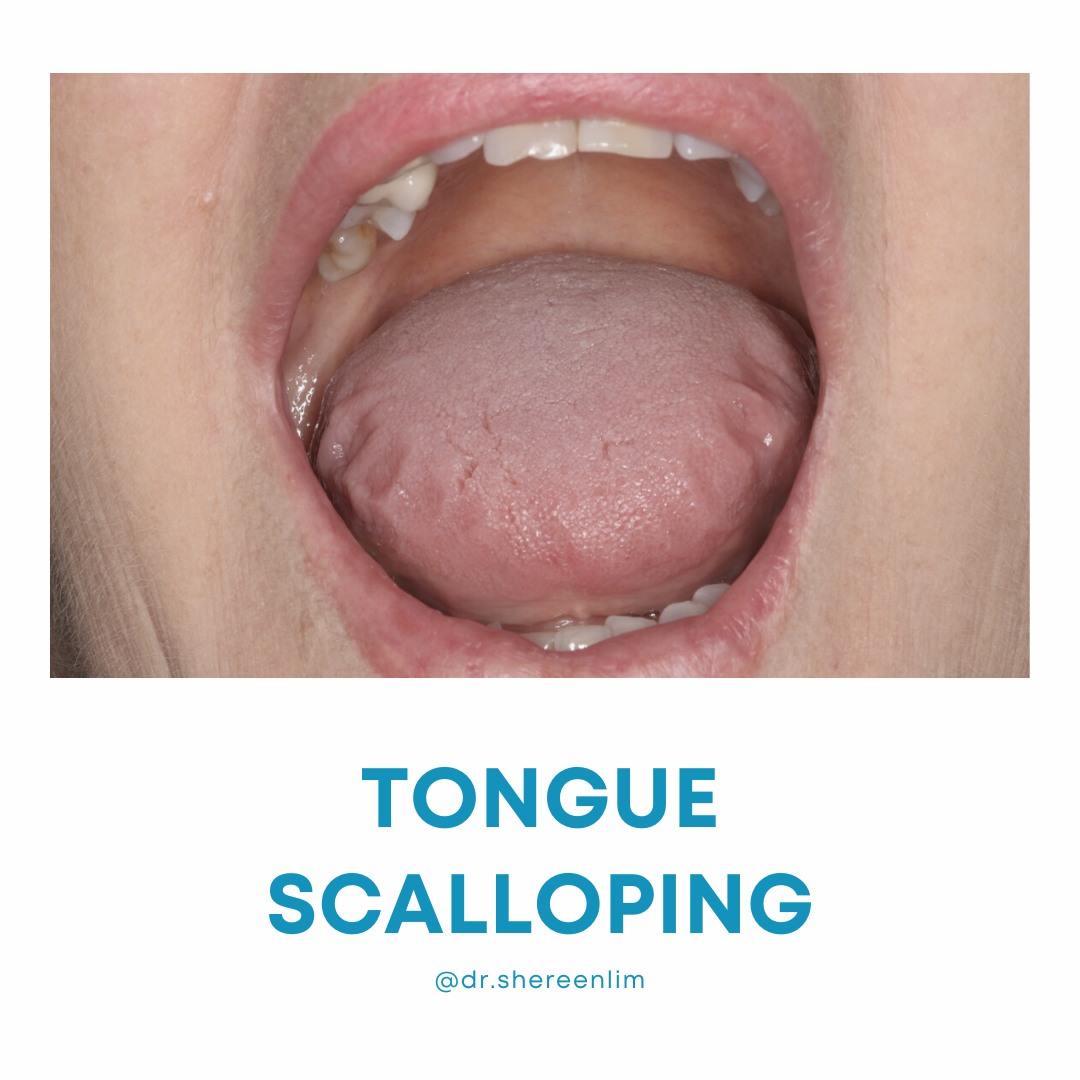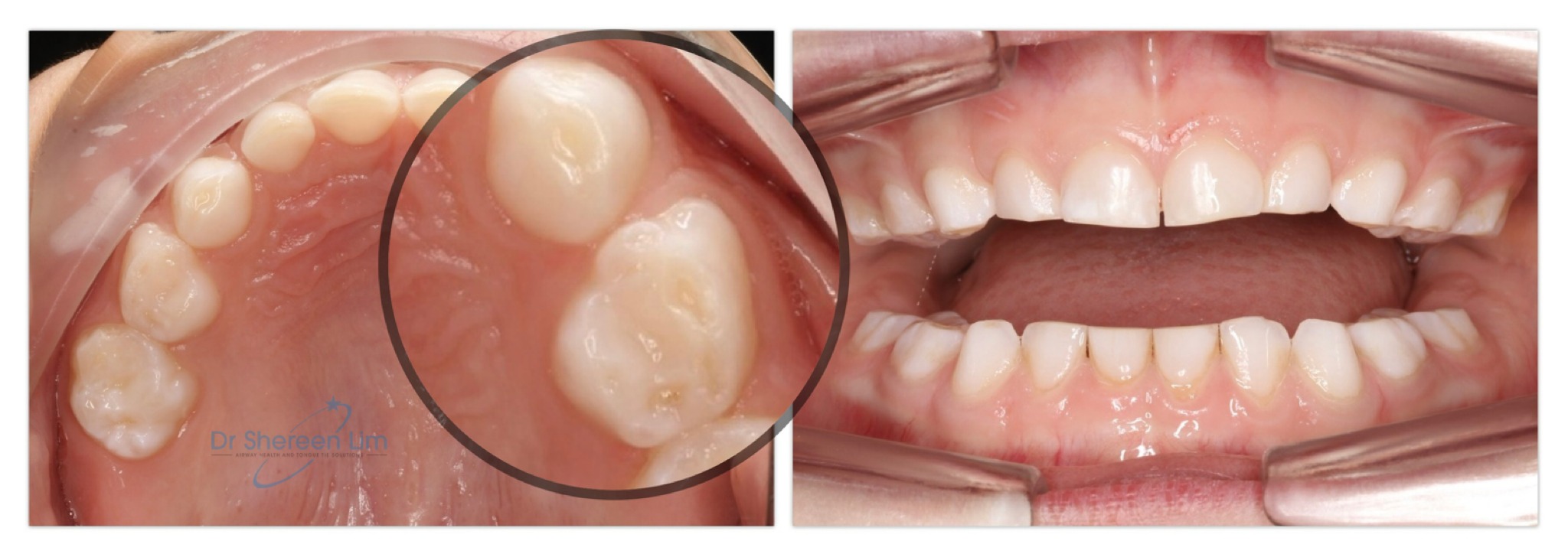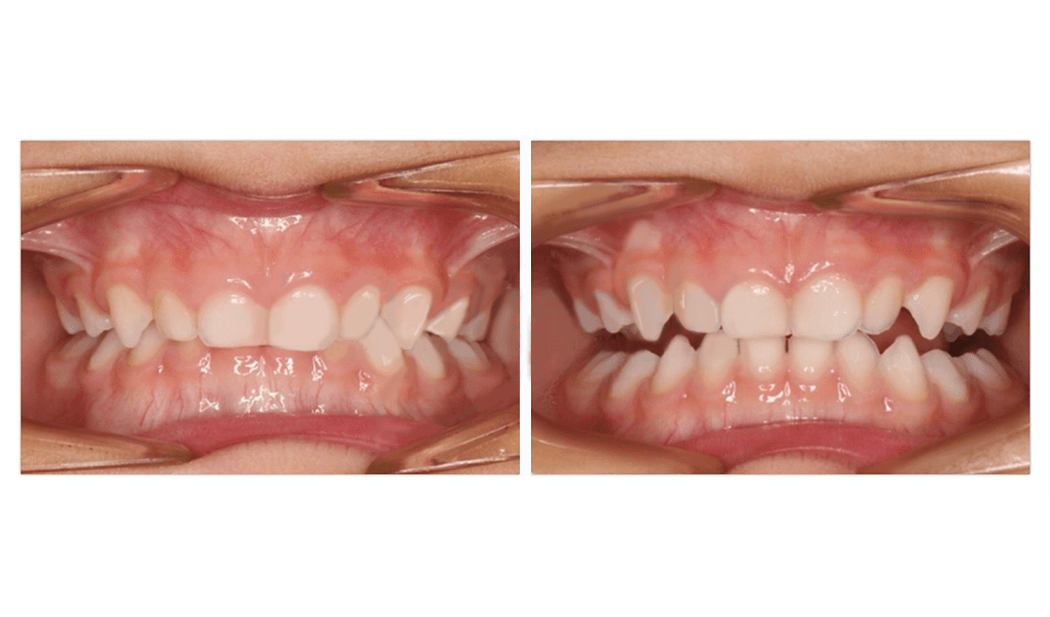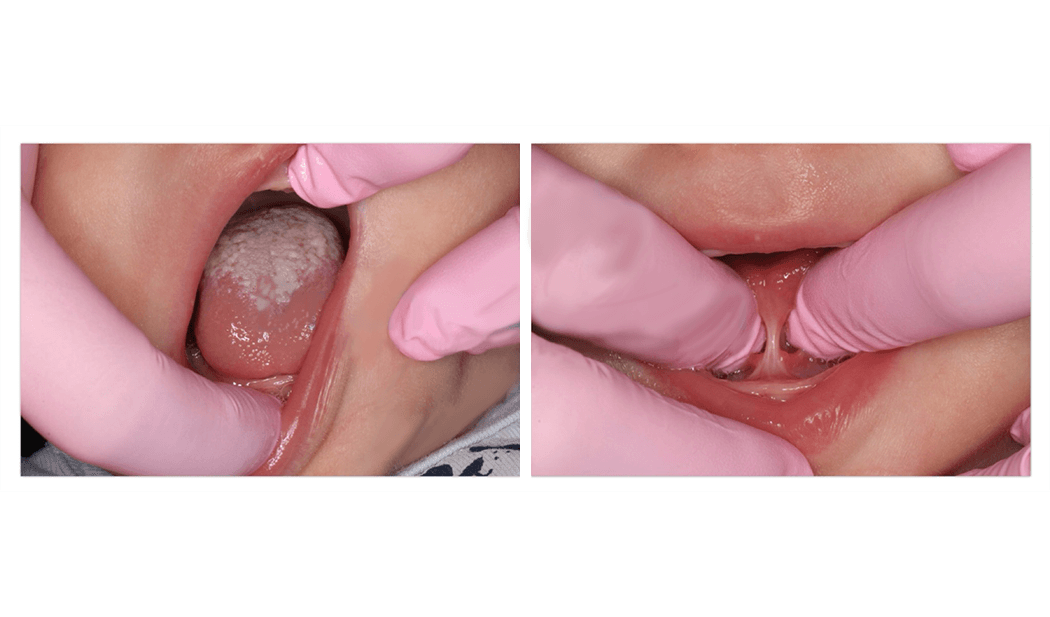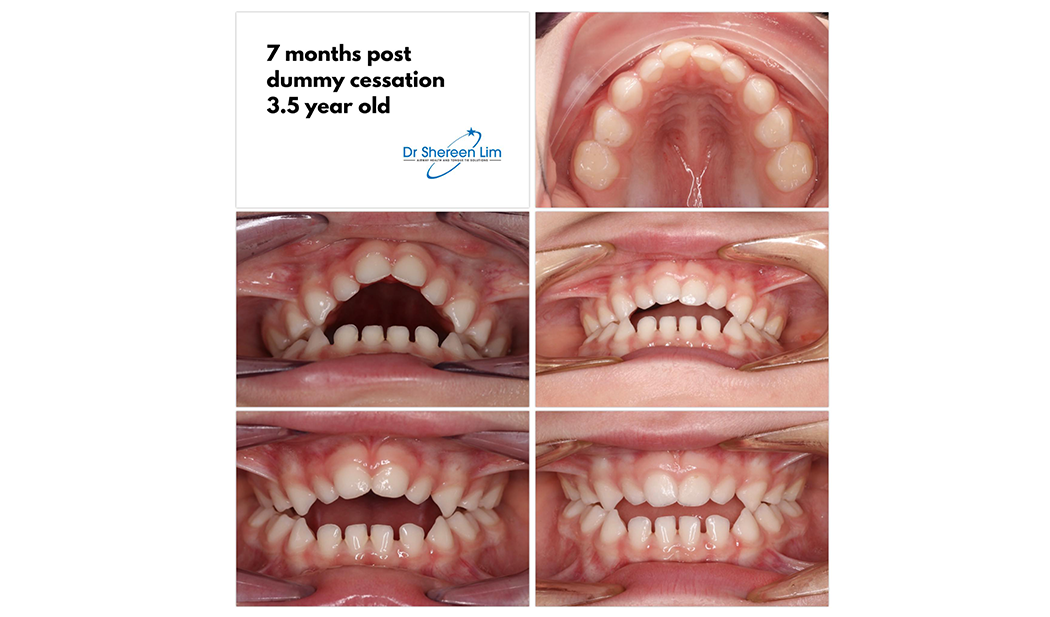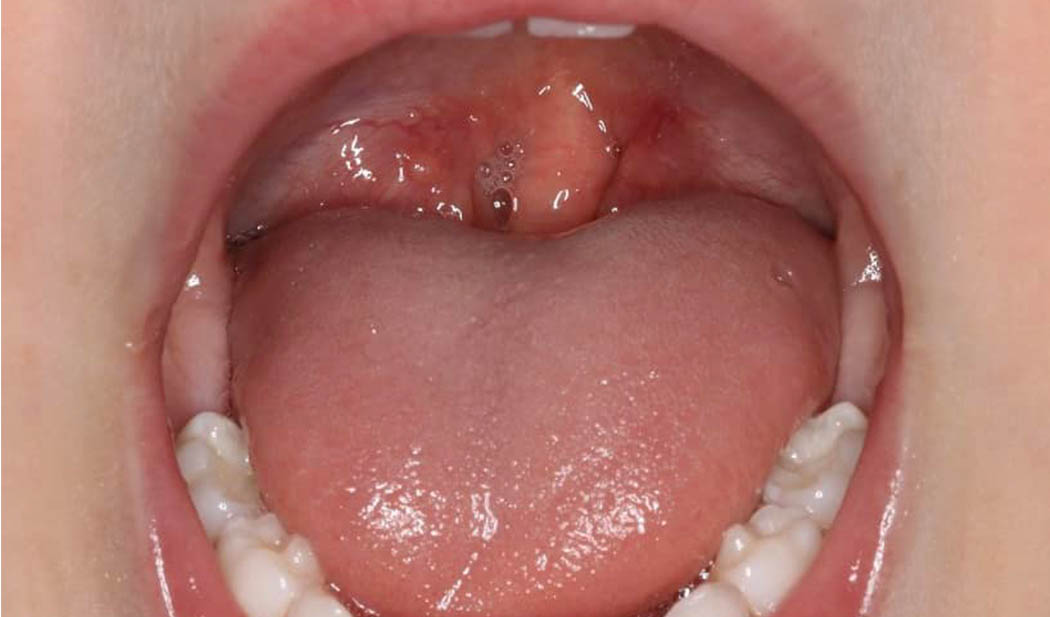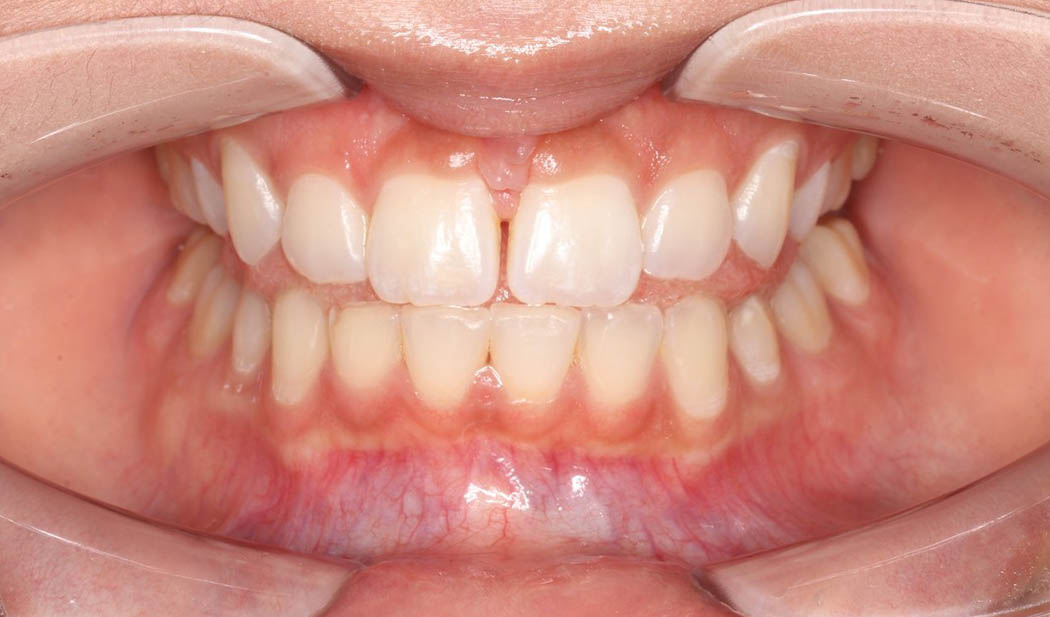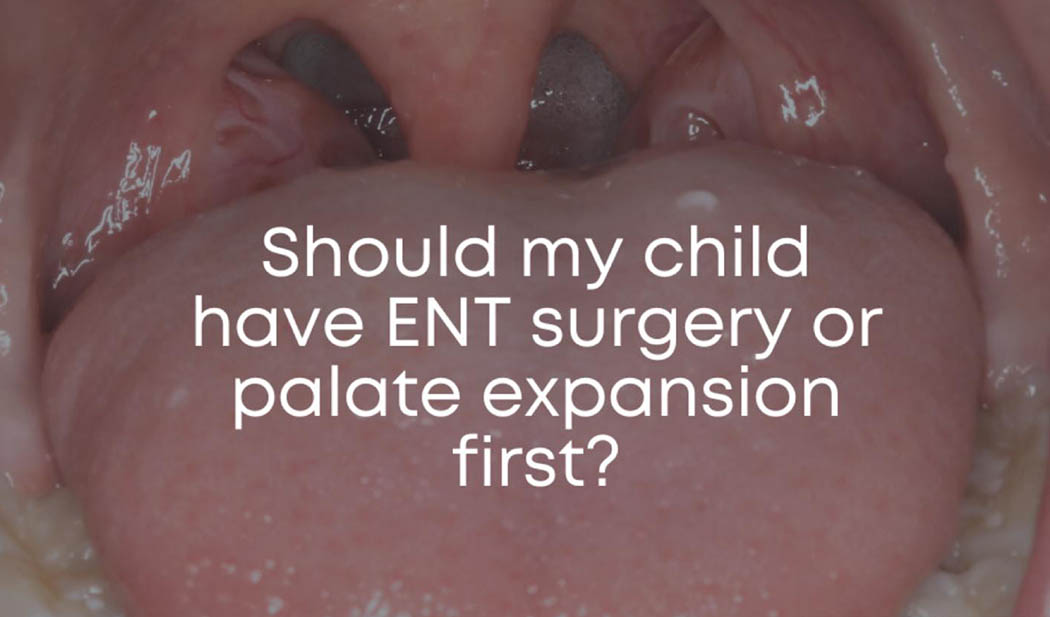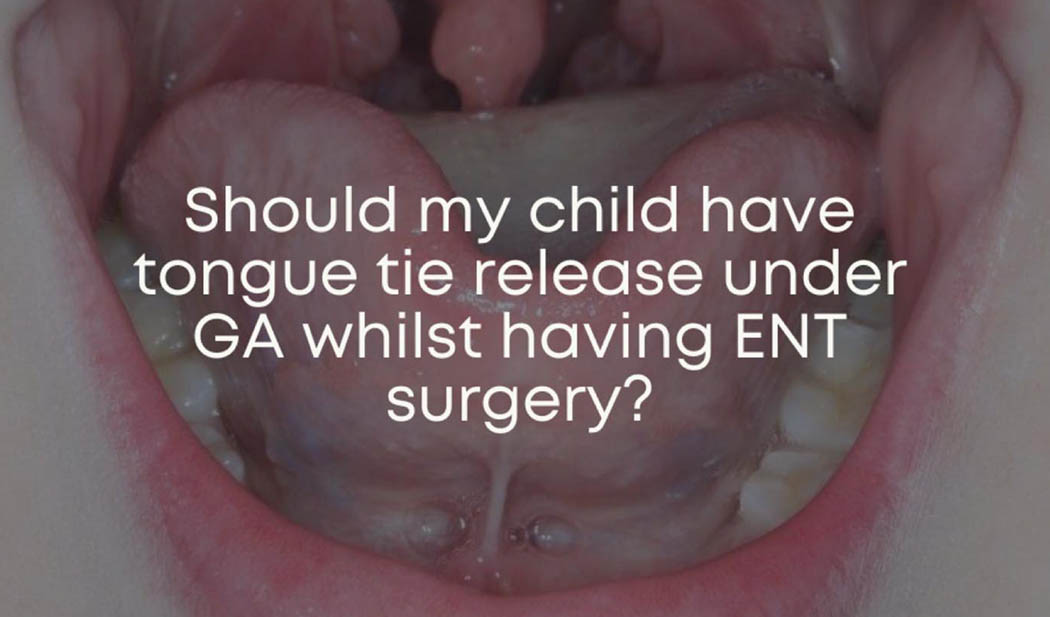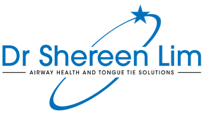The target of myofunctional orthodontics is the poor muscle patterns that contribute to poor jaw development and crooked teeth.
These include:
- Open mouth breathing
- Tongue ties
- Oral habits including dummy, thumb and finger sucking
- Tongue thrusts and reverse swallowing
Approaches include:
- Management of obstructed airways and tongue ties
- Myofunctional therapy
- Myofunctional appliances – including Myo Munchee or Healthy Start Habit Correctors
- Management of allergies and nasal congestion
- Breathing re-training or use of breathing apps
I most often combine these approaches with more mechanical palate expansion devices for quick structural improvements to restore tongue space and improve nasal breathing.
This is one case that I did not use a palate expander, and the results were a result of myofunctional (muscle re-patterning) approaches alone.
The photos are taken 20 months apart.
This patient initially presented at age 8 years. Mum’s main concerns with mouth breathing and worsening overbite.
The goals were to improve lip seal, promote nasal breathing and improve tongue to palate seal at rest.
Treatment included myofunctional therapy and adjuncts including Myo Munchee, tongue tie release, and a Healthy Start Habit Corrector.
His lips seal together more naturally, his deep bite has opened, and his front teeth top and bottom teeth are meeting together in a more normal way.
Breaking old muscle habits and creating new ones is not always a quick fix. But these natural results will ultimately be more stable than purely mechanical approaches with expanders and braces, and they also promote healthier breathing and sleep.
Even when I do use palate expanders for quicker structural changes, myofunctional approaches are a very important part of treatment to wean children off reliance on retainers and promote long term stability.
